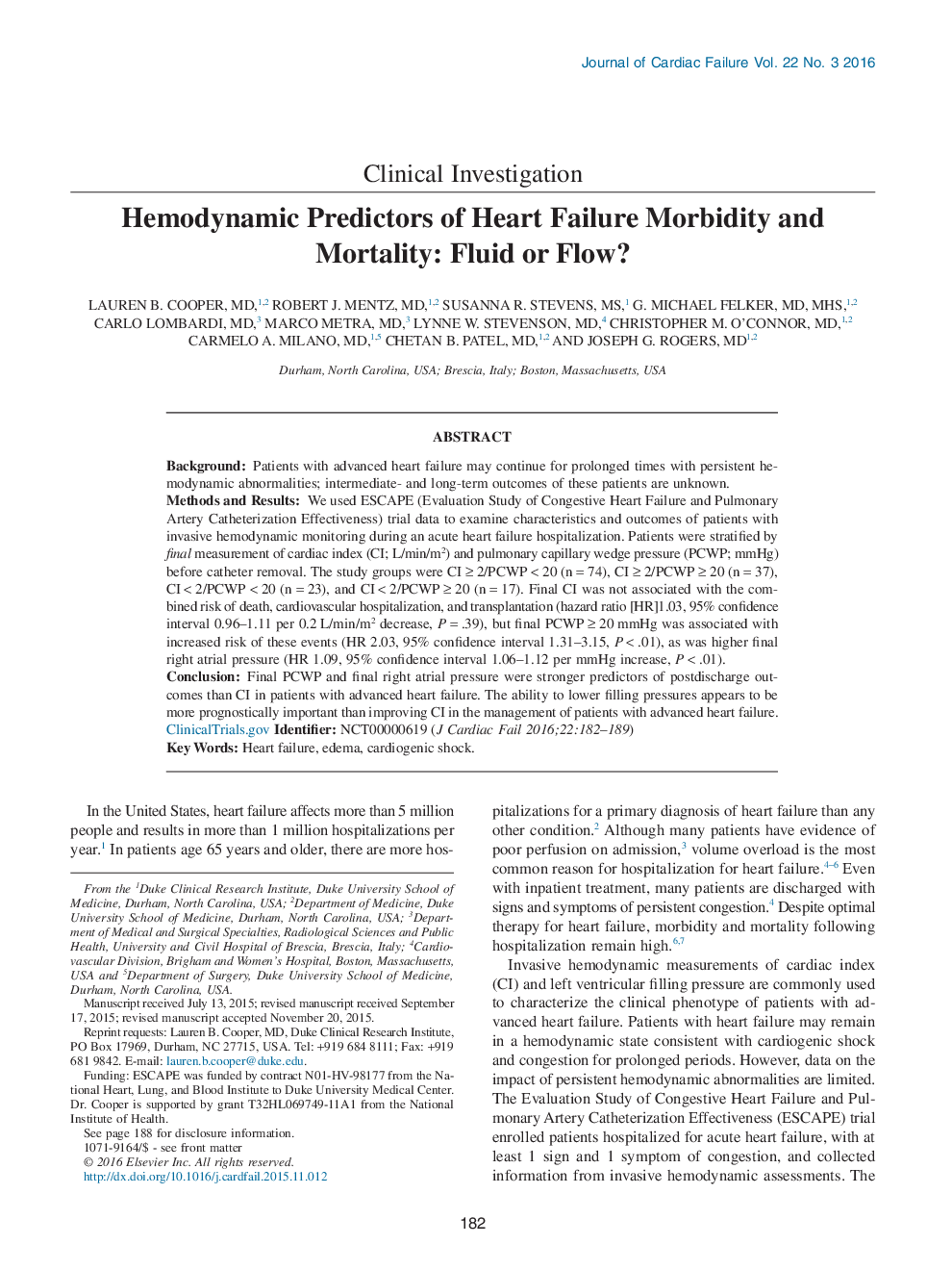| کد مقاله | کد نشریه | سال انتشار | مقاله انگلیسی | نسخه تمام متن |
|---|---|---|---|---|
| 2958593 | 1178293 | 2016 | 8 صفحه PDF | دانلود رایگان |
• We performed an analysis using ESCAPE (Evaluation Study of Congestive Heart Failure and Pulmonary Artery Catheterization Effectiveness) data of patients with invasive hemodynamic data.
• We examined outcomes of patients with heart failure and with persistent hemodynamic abnormalities.
• Final pulmonary capillary wedge pressure was associated with adverse outcomes, but final cardiac index was not.
BackgroundPatients with advanced heart failure may continue for prolonged times with persistent hemodynamic abnormalities; intermediate- and long-term outcomes of these patients are unknown.Methods and ResultsWe used ESCAPE (Evaluation Study of Congestive Heart Failure and Pulmonary Artery Catheterization Effectiveness) trial data to examine characteristics and outcomes of patients with invasive hemodynamic monitoring during an acute heart failure hospitalization. Patients were stratified by final measurement of cardiac index (CI; L/min/m2) and pulmonary capillary wedge pressure (PCWP; mmHg) before catheter removal. The study groups were CI ≥ 2/PCWP < 20 (n = 74), CI ≥ 2/PCWP ≥ 20 (n = 37), CI < 2/PCWP < 20 (n = 23), and CI < 2/PCWP ≥ 20 (n = 17). Final CI was not associated with the combined risk of death, cardiovascular hospitalization, and transplantation (hazard ratio [HR]1.03, 95% confidence interval 0.96–1.11 per 0.2 L/min/m2 decrease, P = .39), but final PCWP ≥ 20 mmHg was associated with increased risk of these events (HR 2.03, 95% confidence interval 1.31–3.15, P < .01), as was higher final right atrial pressure (HR 1.09, 95% confidence interval 1.06–1.12 per mmHg increase, P < .01).ConclusionFinal PCWP and final right atrial pressure were stronger predictors of postdischarge outcomes than CI in patients with advanced heart failure. The ability to lower filling pressures appears to be more prognostically important than improving CI in the management of patients with advanced heart failure.ClinicalTrials.govIdentifier: NCT00000619
Journal: Journal of Cardiac Failure - Volume 22, Issue 3, March 2016, Pages 182–189
